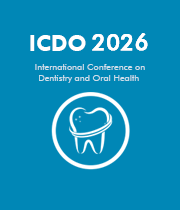Title: Oral biofilms: Novel methods to control pathogenesis
Abstract:
Innovative medical devices have enhanced health care and improved the overall quality of life. Although providing significant medical benefits, there are unfortunately a myriad of diseases that can be attributed to the presence of medical devices. Microbes can colonize on a medical device surface and cause infections, and at times can even lead to malfunction of the device. Microbial species are present either as planktonic cells or incorporated into biofilms. Biofilms evolve from the planktonic state and are characterized as dense micro-communities that grow on inert surfaces and encapsulate themselves with secreted polymers. When organisms form a biofilm, they are able to adapt to environmental change by altering their gene expression patterns. The biofilm structure and corresponding change in gene expression can protect the microbes from disinfectant agents or antibiotics. The resultant biofilm can pose a serious public health issue.
While different types of medical devices harbor biofilms, dental prostheses are some of the most pervasive. The majority of the oral microbes are commensal organisms. Those that are pathogenic microbes can result in oral infections, and at times initiate systemic diseases. The physical nature of biofilms and the survival mechanisms they possess, whether phenotypic adaptability or genetic resistance, leave them impervious to antibiotic treatment. Given the lack of response to traditional antimicrobial therapy, biofilm infections currently pose a great challenge to the world of medicine and odontology.
Despite the difficulty of eradicating biofilms, several conventional strategies do exist to control them. Methods to remove the biofilms include mechanical, chemical or biologic. In this study we focus on (a) the existing chemical methods and demonstrate novel activities and benefits associated with the chemical methods and (b) the application of novel natural products to elicit unique anti-biofilm activities.




